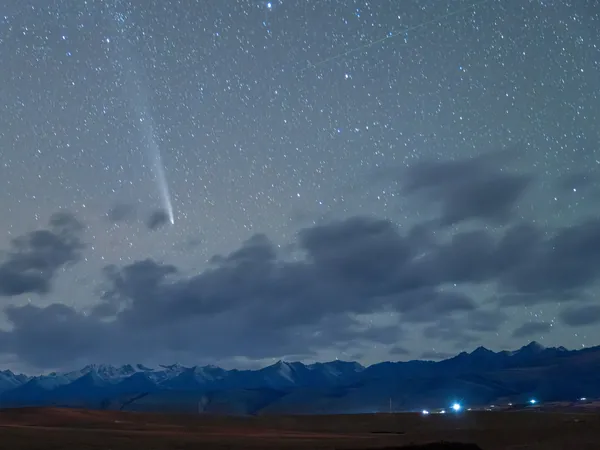
Ready or Not: A Comet from Another Solar System is Coming!
2025-07-06
Author: Yan
A Spectacular Interstellar Event Approaches
Brace yourselves, space enthusiasts! A comet named 3I/ATLAS, believed to have originated from a distant star system, is barreling toward us at a staggering speed of 130,000 mph. Set your calendars, because this cosmic traveler will grace our solar system this fall! It's not just a great opportunity for stargazers; it's a chance to witness a rare event that hasn't happened often in human history.
The Cosmic Context: Our Solar System vs. The Vast Universe
Our solar system is essentially a secluded castle in a universe full of galactic realms. With the nearest star system over four light-years away, the idea of something from outside our solar neighborhood is almost unfathomable. We have only sent out probes like Voyager and Pioneer that have crossed into interstellar space, yet only a few celestial bodies have made the journey into our territory.
The Journey of Comets: From Home to the Stars
In 1980, comet C/1980 E1 (Bowell) made history by making a near pass of Jupiter, which flipped its orbit into a hyperbolic path—dooming it to an eternal journey into the abyss of space. This ignited curiosity: if even one comet could escape, what about others from various solar systems? The discovery of 1I/’Oumuamua in 2017 confirmed that we had received a visitor from beyond, but what could it tell us?
Whispers from the Cosmos: The Alien Comets
Following 'Oumuamua, 2I/Borisov appeared in 2019, providing a deeper glimpse into the otherworldly origins of interstellar comets. With a distinct composition differing drastically from our solar system's usual suspects, Borisov offered promising clues about the conditions in its home star system, possibly in the constellation Cassiopeia.
Spotting 3I/ATLAS: How We Discovered Our Latest Visitor
On Tuesday, a telescope in Chile managed to spot 3I/ATLAS, which was initially mistaken for an asteroid. However, after careful observation—including older images that tracked its path—we confirmed it is undeniably a comet, traveling at a breathtaking velocity.
What's Next for 3I/ATLAS?
This celestial marvel is expected to swing close to the Sun and Earth between October and December, making its closest approach just 160 million miles away. Anticipate exciting revelations about its dimensions and origins, and prepare to analyze the composition of its outgassing materials as it makes its journey through our solar realm.
The Bigger Picture: Are Interstellar Objects Rare?
The arrival of three interstellar visitors in just eight years begs the question: Are such phenomena rare, or simply hard to detect? The Vera C. Rubin Observatory, a groundbreaking facility in Chile, aims to answer this by creating a high-resolution sky map that could revolutionize our understanding of cosmic wanderers.
Conclusion: The Future of Cosmic Exploration Awaits
Prepare for a thrilling season ahead as we track 3I/ATLAS and unravel the mysteries of our universe. It’s not just another comet; it’s a golden opportunity to expand our comprehension of cosmic dynamics, and who knows, maybe even uncover what makes our solar system truly special!




 Brasil (PT)
Brasil (PT)
 Canada (EN)
Canada (EN)
 Chile (ES)
Chile (ES)
 Česko (CS)
Česko (CS)
 대한민국 (KO)
대한민국 (KO)
 España (ES)
España (ES)
 France (FR)
France (FR)
 Hong Kong (EN)
Hong Kong (EN)
 Italia (IT)
Italia (IT)
 日本 (JA)
日本 (JA)
 Magyarország (HU)
Magyarország (HU)
 Norge (NO)
Norge (NO)
 Polska (PL)
Polska (PL)
 Schweiz (DE)
Schweiz (DE)
 Singapore (EN)
Singapore (EN)
 Sverige (SV)
Sverige (SV)
 Suomi (FI)
Suomi (FI)
 Türkiye (TR)
Türkiye (TR)
 الإمارات العربية المتحدة (AR)
الإمارات العربية المتحدة (AR)